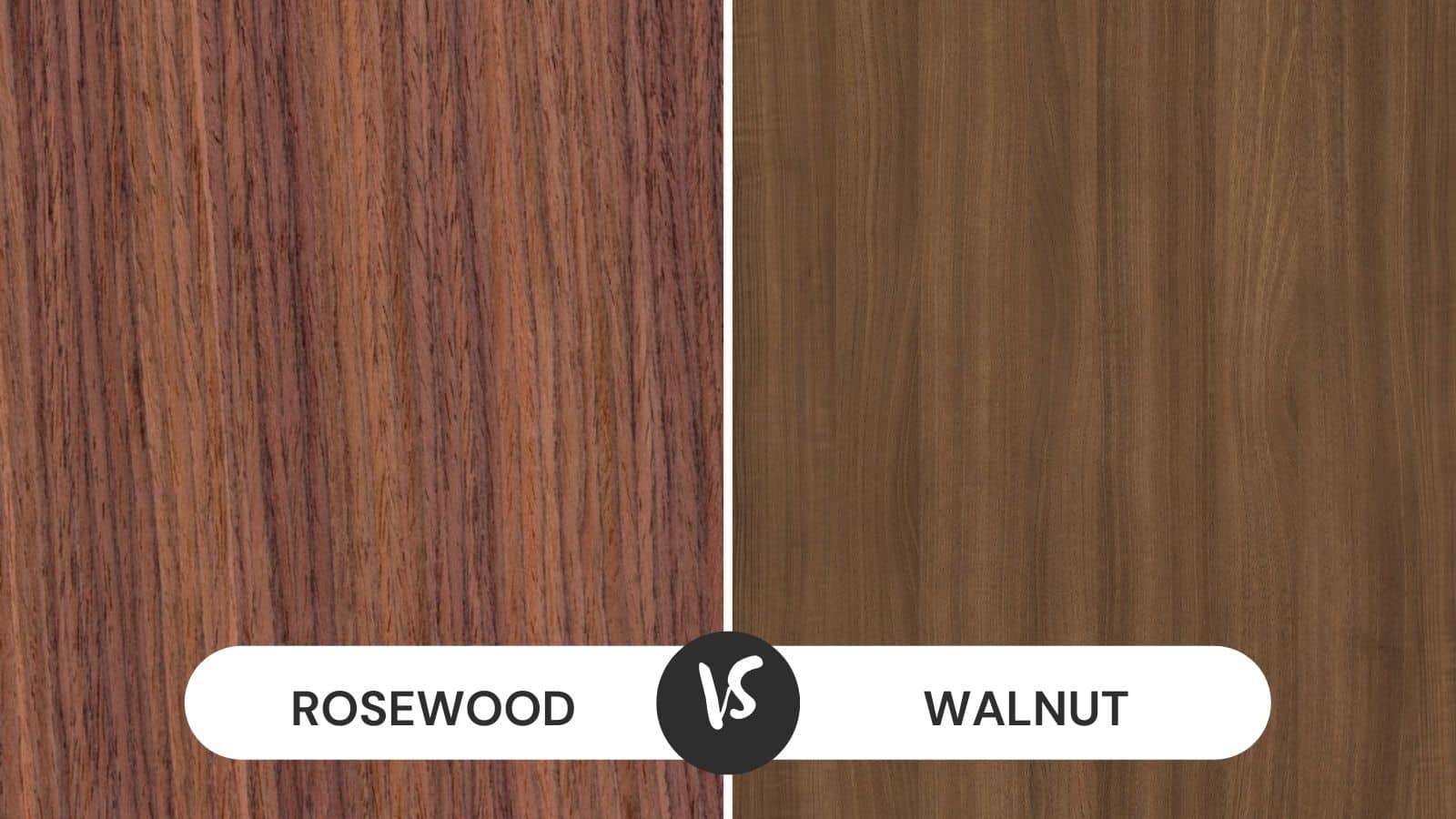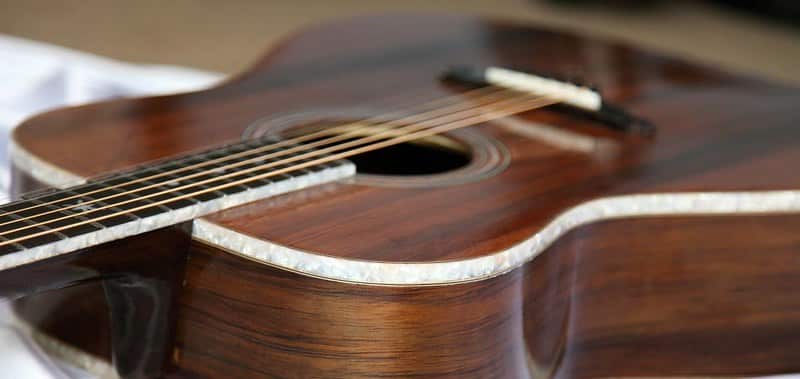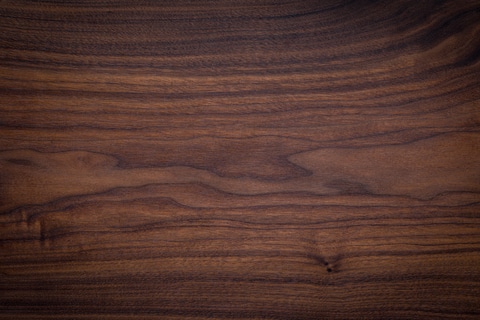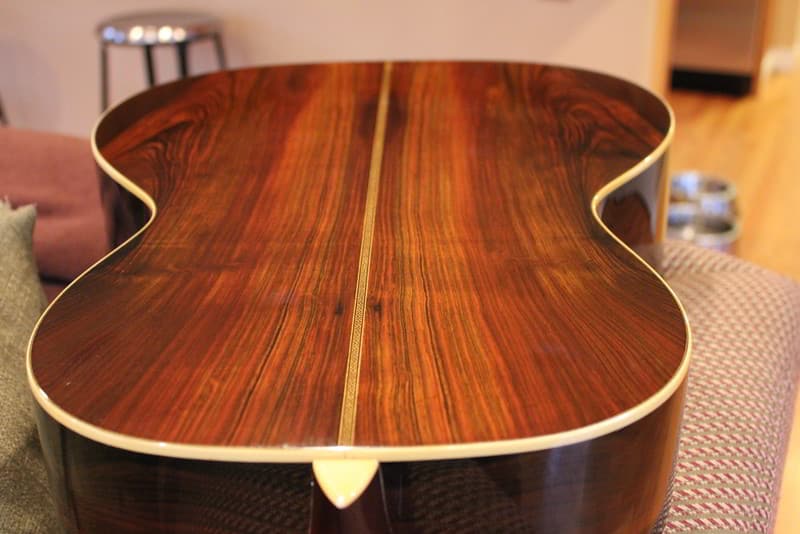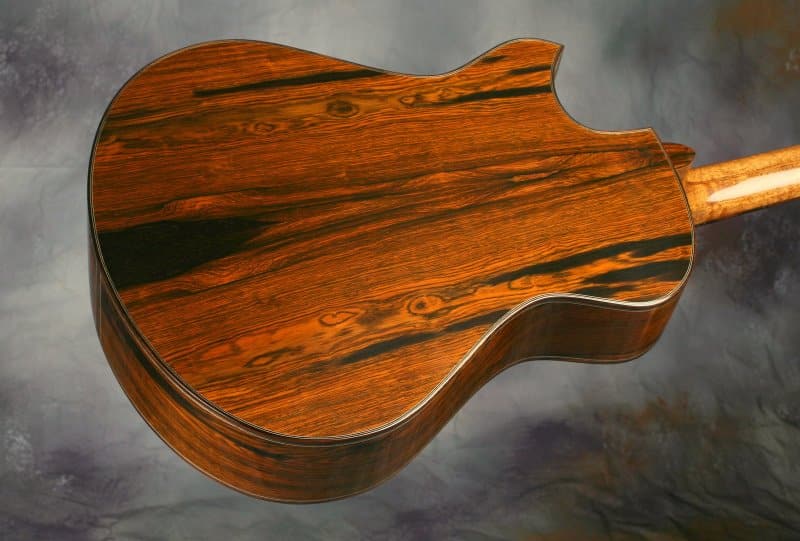A guitar is a widely used musical instrument, and the manufacturers use a variety of different materials and elements to manufacture the guitars. Usually, people choose wooden guitars as they are premium and create a high-quality sound.
However, even wooden guitars are made from different types of wood, and all of them impact the sound quality and tone.
Rosewood and walnut are two commonly used wood options, and there are various things that you need to know to differentiate between them.
Rosewood vs Walnut
| Features | Walnut | Rosewood |
|---|---|---|
| Grain | Open grain pattern | Tight grain pattern |
| Color | Yellow to darker chocolate browns | Golden-brown to reddish browns |
| Workability | Easy | Challenging |
| Hardness | 1120 LBF or 4980 N | 1780 LBF or 7900 N |
| Sound Quality | Thick tones | Warm, natural, and soft tones |
| Application | Electric and European guitars | Acoustic, electric, and bass guitars |
Walnut
Walnut is one of the most excellent wood types. The guitars made from walnut wood are not only durable but are appealing as well. As the name suggests, walnut is cut out from the walnut tree, which promises extremely strong guitars.
It is known for the tonal contrast, which creates a dynamic pattern on the guitar – it creates a perfect finish and color for the guitars.
Walnut has a combination of rosewood and mahogany colors, which promises a better design. Walnut has a thicker tone as compared to maple and tends to be heavier as compared to other wood types. However, this durable design and unique color scheme mean an expensive rate.
The best thing about walnut is that it works with a variety of guitars, including electric guitars. This is because walnut has a great sustain, and it’s harder than mahogany.
In addition, the figured guitars look amazing and have a great finishing. The guitars made from walnut are pretty easy to work with as the wood is warmer and flexible.
It can easily resist wear and tear, which means it can tolerate some scratching. Walnut wood is known for its straight-grained pattern, which is the prime reason it’s suitable for making guitar bodies and necks.
It has dimensional stability, an appealing color scheme, and shock resistance, which means it can be used for guitars intended for rock and heavy metal music.
Walnut wood is extremely strong, promising a strong and sturdy guitar. The walnut wood planks have a dark brown color and even darker streaks.
Usually, the color ranges from yellow to chocolate brown, depending on the tree or tree’s portion it’s cut from. In addition, it has moderately open grains, which are usually straight.
Walnut is popular for its firm and dense structure, which promises a durable design. Still, it has easier workability, making it easier to turn around and make intricate carvings.
In addition to guitars, walnut can be used for manufacturing other musical instruments. The best thing about walnut is that it’s sturdy and strong but is still very light and promises a medium texture.
Walnut has 1120 LBF or 4980 N hardness. It can strike a great balance and has great tonal characteristics, which is why it’s widely used for European guitars.
Usually, walnut is used in combination with cedarwood, and Lowden’s guitars are the primary example of this dual construction. Walnut is also used on the sides and back of the guitar second from left.
As far as the sound is concerned, guitars made from walnut wood have crispy and clear sound, but the sound will have warmth, airiness, and thick tones.
In addition, as you keep playing, the walnut keeps warming up, which helps create a powerful sound. It’s safe to say that walnut can play a two-sided role as it’s used for guitars’ sides and back as well as the soundboard.
Walnut wood is a versatile choice for manufacturing guitars because it can support smooth and soft music genres and brash and boisterous music.
The tonal qualities of walnut wood enable it to create pure sound, which is a strong feature. It can reduce the overtone and has the capacity to separate the notes.
In addition, the treble response of walnut-made guitars is extremely clear, and there won’t be any distortion or cluttering in the sound. Walnut is extremely stable when expansion and shrinkage are concerned, even when it’s exposed to a high-moisture environment.
This material works amazingly and isn’t prone to cracking at all. However, the humidity level of the home should be kept between 40% and 60% because maple can crack if the environment is super dry.
As long as you retain the humidity level, guitars made from walnut wood will last for years.
Rosewood
Rosewood is a suitable choice for people who want dynamic colors for their guitars. This is because rosewood has an enriching variety of purple and brown colors, which creates appealing guitars.
Rosewood is not only an aesthetically amazing option, but it’s also lightweight, which means you won’t get tired of playing guitars made from rosewood.
It is one of the hardest and most durable wood out there, which makes it a functional choice. Rosewood can create rich tones as it can handle the guitar’s volume and resonance.
This is because it has a porous nature, which improves the quality of tones. However, it comes at a higher cost, but it’s worth the high-end musical experience.
Rosewood is easily available in Asian countries, which is why the guitar manufacturers have to import it, which leads to a high price. To illustrate, rosewood is hard, durable, and tough, which is why it’s a common choice for making premium guitars.
In the majority of cases, rosewood has a straight grain and dark-tone colors, but the coloration primarily depends on the wood’s source country.
Similarly, it can be found in deep purple and golden-brown colors. Rosewood is available in a variety of textures, ranging from uniform to coarse and medium structures.
This material has narrow interlocked grains and tiny pores, which help create highly balanced and brighter tones, so the guitar will feel great to play.
The only drawback of using rosewood is that it’s heavy, which means the guitar will be heavy as well. In particular, it has 1780 LBF or 7900 N hardness. It can create a rich and warm tone, which promises great volume and resonance.
If the guitar is made from Brazilian rosewood, the guitar will have improved clarity in the bottom, and trebles will have bell-like tones.
On the other hand, Indian rosewood is more convenient to find but has coarse grain marking. Rosewood has a porous nature, which means it demands pore filling before the lacquer is applied.
In addition, the wood has a greasy nature, which promises a warm tome. Rosewood is widely used for acoustic, bass, and electric guitars.
Moreover, it can be used for fretboards as well. Given the medium-density design and naturally oily nature, it promises warmer music tones and won’t require much finishing. In fact, many guitarists prefer the natural feel of rosewood.
The best thing about rosewood’s open-pore design is that it doesn’t reflect the overtones, which adds a natural tone to the music.
In the majority of cases, rosewood can create soft and warm tones. In addition, the natural tones of the rosewood can easily temper the bright punch of new guitar strings, particularly in acoustic guitars.
It doesn’t matter if your guitar has Indian or Brazilian rosewood; it will be easy to create warm and soft tones.
The rosewood-made guitars are made for players who like warm tones while enjoying the natural feel of rosewood. In addition, these guitars are suitable for attenuating brightness.
The Bottom Line
Both rosewood and walnut wood are great choices for making guitars, but the latter is suitable for electric guitars, while rosewood is suitable for acoustic, electric, and bass guitars.
However, both of them have significant differences, such as grain pattern, color, workability, and harness level, which influence the sound quality and tones.

